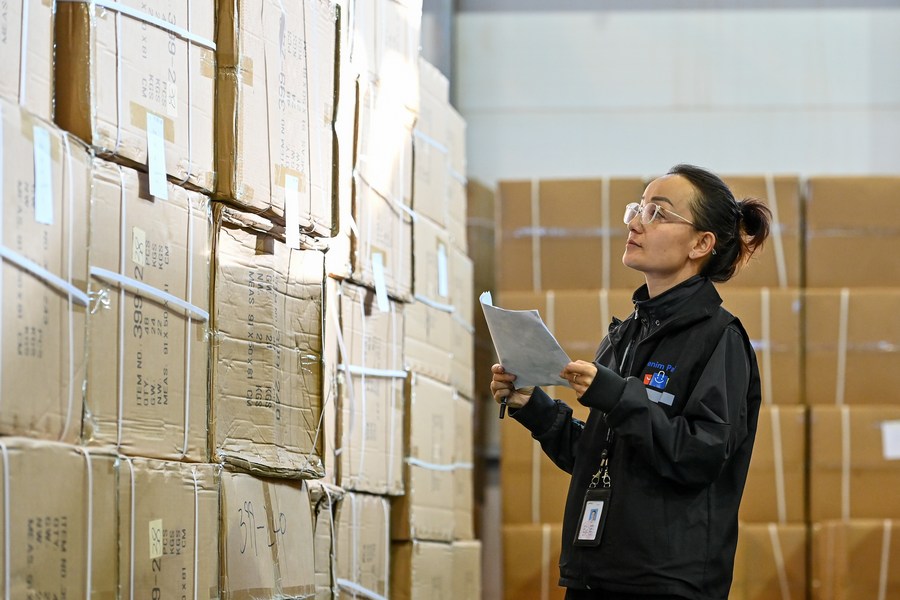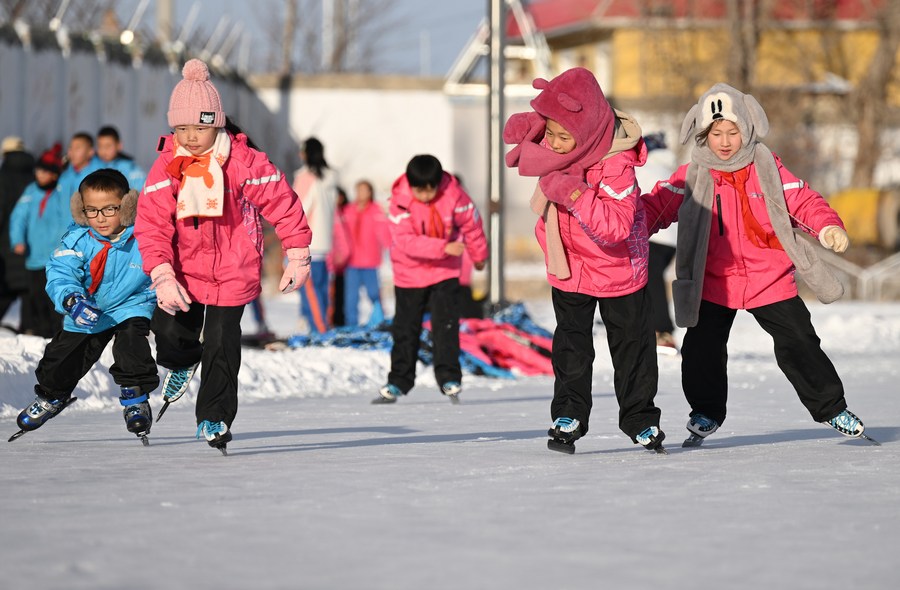Her Rights, Her Future

In Xinjiang, local authorities are integrating women’s development into broader economic and social progress.
Since the founding of the People’s Republic of China in 1949, the nation has been underscoring the importance of gender equality. Enshrined within the Constitution lies the unequivocal statement that “women shall enjoy equal rights with men in all spheres of life: political, economic, cultural, social and familial.” This constitutional guarantee has ushered in a robust legal framework dedicated to the protection and enforcement of women’s rights and interests in China that has been widely implemented across the country, with Xinjiang Uygur Autonomous Region serving as a clear example.
Legal foundation
Enacted in 1992 and revised in 2005, 2018 and 2022, the Law on the Protection of Rights and Interests of Women lays the groundwork for gender equality and the protection of women’s rights in China. It sets forth in detail the legal rights and interests of women in politics, culture, education, personal affairs, property, marriage and family. It also outlines systems of redress for rights infringements and the obligations of related bodies.
From this foundational law, a continuously evolving legal framework has emerged, progressing through two primary avenues: the establishment of specific legal norms explicitly aimed at safeguarding women’s rights and the introduction of numerous legal provisions containing special clauses dedicated to the protection of women’s rights. As an example of the latter, China’s Criminal Law imposes harsh penalties for offenses that disproportionately violate women’s rights, such as abduction, trafficking, rape and underage sexual offenses. Additionally, laws governing marriage, employment agreements and rural land arrangements incorporate provisions that support and advocate for women’s rights.
Legislative development is also being carried out at the regional level. For example, Xinjiang enforces the constitutional mandate of gender equality with regional statutes against domestic violence and affirming women’s employment rights, including equal compensation for equal work. In its efforts to enhance its legislation, the regional government has actively empowered local authorities to advance women’s initiatives. It has published outlines and plans, including guides for the development of women’s undertakings for the periods 1996-2000, 2001-10, and 2011-20, as well as the 2021-25 plan for women’s development.

Effective implementation
Better implementation of existing legal protections has also been a focus for development. Related authorities have been introducing systems that increase support for laws on protecting women’s rights by making them more actionable and enforceable. One example is the united effort by key organizations, including the Supreme People’s Court, the country’s top judicial body, and the All-China Women’s Federation to more effectively combat and deter domestic violence by formulating guidelines to reinforce personal safety.
This has led to a rise in the number of court cases related to a wide range of issues related to the safeguarding of women’s rights, including sexual harassment in public places, domestic violence, gender discrimination in the workplace and cyber defamation against women. Illustrative cases, carefully chosen by premier judicial bodies such as the Supreme People’s Court, are released to the public, showcasing legal actions taken against domestic violence and for the defense of women and children’s rights. These cases aim to demonstrate the legal system’s resolute attitude against any infringement of women’s rights.
The Standing Committee of the National People’s Congress (NPC), China’s top legislature, supervises the government’s enforcement of these laws. On August 28, 2023, the State Council presented a report at the Fifth Session of the 14th NPC Standing Committee, summarizing the seven-year implementation of the Anti-Domestic Violence Law. This oversight has been shown to have a significant impact on the effectiveness of policy implementation, mobilizing government and social forces throughout the process of enforcing laws that safeguard women’s rights.
In Xinjiang, local authorities are integrating women’s development into broader economic and social progress. They focus on the education of girls, women’s healthcare, political participation and employment. The local women’s federation works together with the Higher People’s Procuratorate of Xinjiang to strengthen judicial assistance for women in difficult situations through a specialized initiative known as the Pomegranate Blossom project.
In January 2022, Xinjiang released a plan to promote women’s participation in high-quality development through 92 welfare measures spanning eight fields including health, family and more. The plan aims to promote coordinated development among women from urban and rural regions and different areas and groups.
In recent years, protections for the rights of women in Xinjiang have been increased, and their health conditions have continued to improve. The maternal mortality rate in the region dropped from 39.45 per 100,000 in 2011 to 7.89 per 100,000 in 2020.

Big changes
On January 1, the National Bureau of Statistics released the Statistical Monitoring Report of China National Program for Women’s Development (2021-30) in 2022, which analyzed the program’s implementation in 2022 in eight areas: health, education, economy, decision-making and management, social security, family building, environment and law.
In 2022, 3,792 personal protection orders were issued specifically for women, indicating a considerable commitment toward safeguarding their wellbeing and safety. That same year, the Ministry of Public Security launched a special campaign to crack down on the crime of abducting and trafficking women and children, and solved 970 related cases throughout the year; 37,000 cases of rape were solved.
Women’s equal access to education and labor is also improving. The disparity between genders in education has drastically diminished. In 2022, there were 1.87 million female graduate students, accounting for 51.2 percent of all graduate students. There were 320 million women employed nationwide in 2022, accounting for 43.2 percent of the total workforce.
The proportion of women participating in social insurance has also increased. By the end of 2022, 650 million women were covered by basic medical insurance. This was 48.5 percent of the total number covered and 0.2 of a percentage point higher than at the end of 2021. Additionally, 510 million women were participating in basic old-age insurance, an increase of 20.97 million over the end of 2021.
More efforts have been made to train and select female officials, with the proportion of government institutions headed by women increased at the provincial, municipal and county levels.
Government and judicial institutions are also working to meet new challenges as they emerge. For instance, women in science and research have been identified as facing particular difficulty in balancing childbirth and their careers. To address the issue, some regions are extending the appointment and evaluation period for women scientists and researchers whose work is interrupted by maternity leave. Other places are experimenting with the use of digital technology to establish smart systems for the protection of the rights of women and children. These innovative approaches require the collective attention and participation of the entire society.
Xinjiang also guarantees the right of women to participate in democratic decision-making, management and supervision of governance and social affairs. The region attaches importance to the training and selection of female officials, and the number of women participating in the administration of public affairs has continued to grow, from 16,338 in early 1955 to 460,600 in 2019. In early 2024, there were 14 female deputies (23.3 percent of Xinjiang’s total) to the NPC.
Women in the region are playing a growing role in grassroots democracy and business management. In 2020, women took 64.7 percent of the seats in urban residents’ committees, and 30.5 percent in rural villagers’ committees.
The author is an associate professor at the Law School, People’s Public Security University of China.
 Facebook
Facebook
 Twitter
Twitter
 Linkedin
Linkedin
 Google +
Google +










